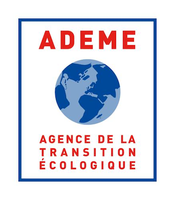Search eceee proceedings
Low-carbon commons: changing property rights for urban retrofits
Panel: 5. Towards sustainable and resilient communities
This is a peer-reviewed paper.
Author:
Dan van der Horst, university of edinburgh, United Kingdom
Abstract
This paper develops a analysis of challenges to urban low carbon urban retrofits, caused by the scarcity of urban space and the presence of pre-existing property boundaries. There is growing evidence that the spatial characteristics of a city influence the environmental footprint of its citizens and that this creates a range of context specific challenges for the governance of low carbon transitions in cities. On the one hand, more compact cities are associated with lower carbon lifestyles. But on the other hand, more urban space allows for more retrofit options, e.g. for external insulation, installation of more renewables and accommodation of more active travel infrastructure (e.g. bike lanes) or green space to provide nature based solutions. But it is not only the existing urban morphology, street design and housing types that shapes the options for low carbon interventions. The city is a dense network of rigid property boundaries and old rules about access to and use of space, and existing literature pays limited attention to the ways and extent to which this can hamper the adoption of more efficient and equitable low carbon investments and behaviours, especially when many homes are privately owned by their residents. Through real world examples, this paper seeks to characterise these property barriers and spatial constraints, and organise low carbon interventions into a generic set of options to change property archetypes – typically away from exclusionary private control towards a better low carbon utilisation of scarce urban space. Focusing on substantive urban issues in the UK (i.e. concerning millions of households), this paper highlights how the existing landscape of allocated private rights (from user right to exclusionary ownership) creates significant inefficiencies in deploying low carbon interventions in particular parts of the city, and discusses what (in terms of property rights) would need to change in order to overcome these inefficiencies and achiever faster and deeper decarbonisation of existing houses, streets and neighbourhoods.
Downloads
Download this presentation as pdf: 5-315-22_vanderHorst_pres.pdf
Download this paper as pdf: 5-315-22_van_der_Horst.pdf
Panels of
1. Dynamics of consumption: less is more?
2. Efficiency and beyond: innovative energy demand policies
3. Policy, finance and governance
4. Monitoring and evaluation for a wise, just and inclusive transition
5. Towards sustainable and resilient communities
6. Energy-efficient and low-carbon mobility for all
7. Policies and programmes for better buildings
8. Innovations in products, systems and building technologies



























